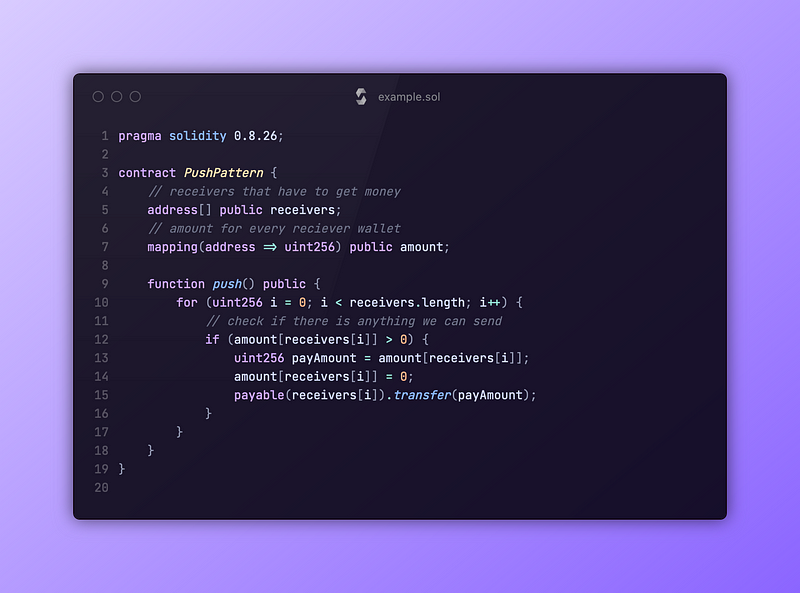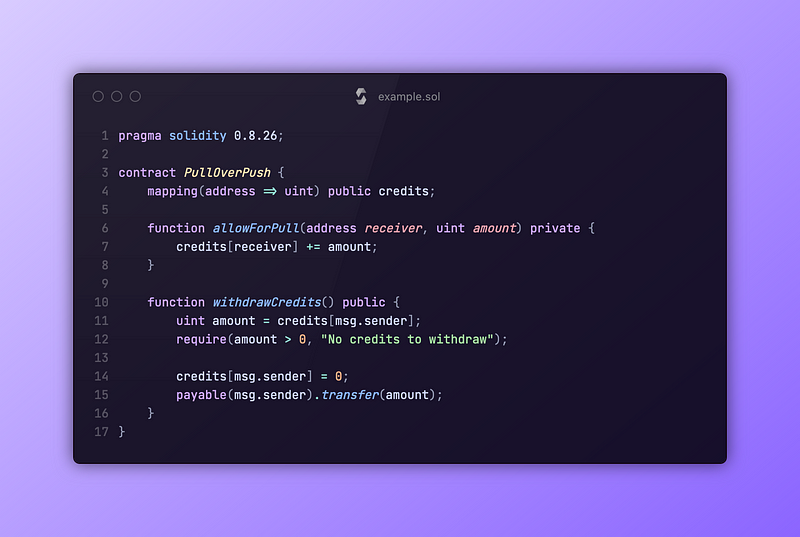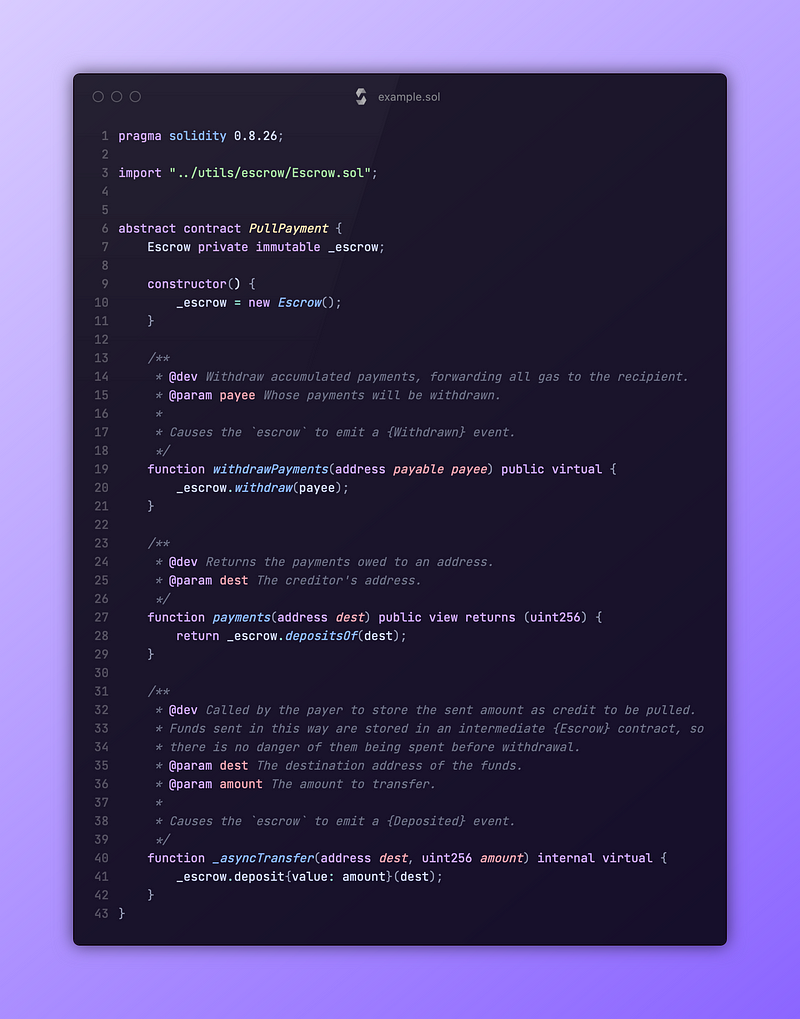“Pull over Push” pattern in solidity

In the world of Ethereum smart contracts, transferring ETH can be tricky. The “Pull over Push” pattern is a method that shifts the responsibility of withdrawing funds from the contract to the user, ensuring smoother and safer transactions. This approach is crucial for avoiding common pitfalls when dealing with multiple recipients or complex contract logic.
Why the Push Pattern Fails
The traditional approach to sending funds — automatically pushing ether to users — seems straightforward but can lead to several issues.
Here’s a simplified example of push pattern, where we send transfer ETH directly to all receivers when push function is called.
Issues with the Push Pattern:
- Gas Limit Problems: Iterating over a large array of addresses can exceed the block gas limit, making the function fail.
- Expense for Contract Owner: The user who calls the withdraw function pays for all the gas, which can be really expensive.
- Potential for Failure: If even one transfer fails (e.g., due to a recipient contract throwing an error) the entire transaction will be reverted.
The Better Way — The Pull Pattern
Instead of pushing funds to users, the pull pattern allows each user to withdraw their funds independently. This individualizes transactions, enhancing security and spreading out gas costs.

Benefits of the Pull Approach:
- Isolated Failures: Each withdrawal is a separate transaction. If one fails, others are unaffected.
- Fair Cost Distribution: Users only pay for their own withdrawals, which distributes the gas costs more fairly.
- Enhanced Efficiency: Avoids the inefficiency of looping through potentially large arrays, leading to lower gas usage
OpenZeppelin’s Implementation of the Pull Pattern
If you want real world best practices, check how OpenZeppelin implements the Pull over Push pattern in its PullPayment.sol contract. This implementation leverages the Escrow contract to manage user funds securely, but the whole idea is pretty straightforward and should be clear for you already.

Conclusion
The “Pull over Push” pattern offers a significant improvement in managing ether transfers within Ethereum smart contracts. By letting users withdraw their funds independently, this method enhances security and mitigates the risk of transaction failures. However, it is essential for developers to weigh the trade-offs and ensure that users are well-informed about the withdrawal process to maximize efficiency and user satisfaction.